Delaware's Gilded Age: Here's a guide to 15 du Pont family estates
Delaware's prominent and influential du Pont family, one of the wealthiest in America, has long been mindful of preservation and conservation.
The late Irénée du Pont Jr.'s choice to offer Longwood Gardens the opportunity to buy his spectacular and historic Chateau Country Granogue mansion and its 505 acres is continuing the family tradition of ensuring the estate would remain as open space and not be developed.
Details of the agreement were not disclosed, although real estate experts have estimated the estate is worth at least $50 million. Longwood said the property will not yet be open to the public. The house will likely not become a museum, unlike the nearby Winterthur estate owned by Henry Francis du Pont.
Chateau Country, the posh area of Greenville, Centreville and Montchanin, about 10 miles west of Wilmington, got its name because many du Pont family members, after emigrating from France in 1800, built sprawling country estates in the rolling hills as they made their fortunes in explosives and chemicals.
The du Pont family's wealth remains today, though according to a 2020 listing by Forbes magazine, the family's worth of an estimated $16 billion is spread among about 4,000 heirs.
Some historic du Pont homes, like St. Amour, the Wilmington estate of Irénée du Pont Sr.'s mother, Mary Belin du Pont, that sat off Pennsylvania Avenue, are long gone.
But others are still standing. Granogue near Centreville remained a private, family home for 100 years. And some like Stonehouse, a du Pont family estate off Old Kennett Road in Centreville, remain private.
More: EXCLUSIVE: This Delaware du Pont estate may be worth $50 million. Look who's buying it.
Stonehouse, a nine-bedroom, 12-bathroom house, was completed in 1939 for Crawford H. "Greenie" Greenewalt and his wife, Margaretta Lammot du Pont. Greenewalt, a chemical engineer, served as DuPont Co.'s president from 1948 to 1962. During World War II, he also was a manager of the Manhattan Project for the company.
The property got its Stonehouse name from stones used from the foundation to the roof. Every floor and stair was built upon concrete because Greenewalt wanted to ensure that if there ever was a house fire, it would not spread beyond one room, according to News Journal archives.
The property initially was 550 acres, most of which were donated to the Delaware Nature Society to be conserved in perpetuity.
In recent years, the home and land, slightly more than 22 acres, have been owned by a former MBNA executive. It sold for $4 million in 2021.
Here's a look at more du Pont estates that are now mostly open to the public.
Bellevue Hall
The former estate of William du Pont Jr., an avid equestrian who founded Delaware Park, is located off I-95's Marsh Road exit in what is now Bellevue State Park. The park includes horse stables, indoor horse training facilities, a 1?-mile-long horse track, tennis courts, a band shell, walking trails and a pond for fishing.
When "Willie," as he was known, inherited the site in 1928, he made over a dark Gothic Revival castle built in 1855 that was then known as Woolton Hall.
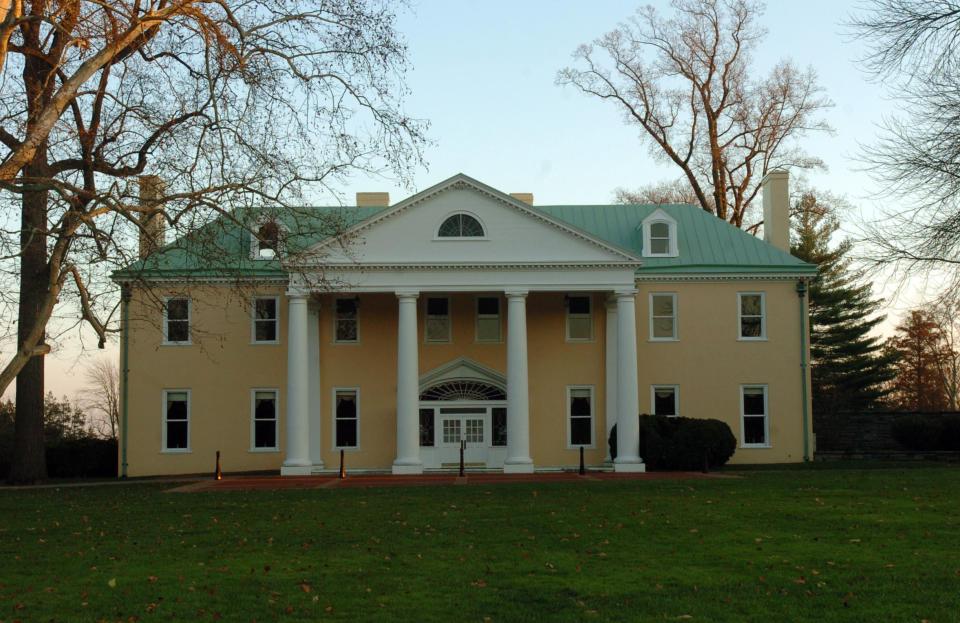
It was renamed Bellevue Hall and du Pont wanted the house to be a replica of Montpelier, the home of President James Madison. Du Pont's parents had purchased the original home of James and Dolley Madison in 1900.
After Willie du Pont's death in 1965, none of his five children, including son John du Pont, who was found guilty but mentally ill in the 1996 shooting death of Olympic wrestler Dave Schultz, wanted the property because of its expensive upkeep.
The state purchased the site for $6.25 million in 1976 (about $31.2 million today) and it was transformed into a public park a year later. The mansion, which can be rented for private events, was refurbished in 2006. It overlooks the Delaware River and is surrounded by trees from around the world planted by du Pont.
Brantwyn
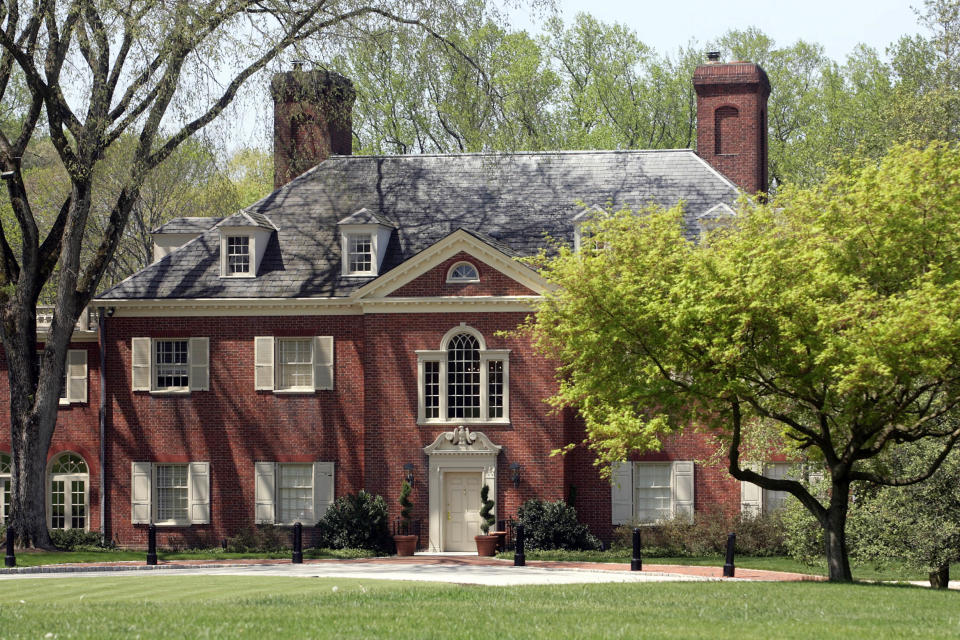
The childhood home of the former Gov. Pierre Samuel "Pete" du Pont IV sits on the grounds of the DuPont Country Club at Rockland Road.
One of the best-known family members, he served as Delaware's lone congressman from 1971 to 1977 and as the state's 68th governor from 1977 to 1985. He was the first and last du Pont, so far, to hold the seat.
He also sought the Republican U.S. presidential nomination in 1988 but dropped out after the New Hampshire primary. In recent years, he wrote columns for the Wall Street Journal. Du Pont died in May 2021.
The 28,000-square-foot, brick Georgian Revival mansion was first named Bois-Des-Fosses for family property in France. It was purchased by DuPont Co. in 1991. Demolition was considered, but instead, the building was refurbished as a venue for conferences and weddings and renamed Brantwyn.
Several local high schools hold their proms at the mansion. The DuPont Country Club was sold in 2018, and one of its current owners is Ben du Pont, the youngest son of Pete du Pont.
Buena Vista
While Delaware and U.S. statesman John Middleton Clayton built Buena Vista at 661 S. Du Pont Highway in New Castle in the mid- to late 1840s, the mansion and estate were acquired by T. Coleman du Pont in 1914.
Du Pont was one of the three cousins, including Pierre S. and Alfred I., who created the modern-day DuPont Co.
Delaware's Route 13, the state's major north-south roadway, was started by T. Coleman, a former U.S. senator. He also owned hotels, including the Waldorf-Astoria Hotel in New York City; the Willard Hotel in Washington, D.C.; and the Bellevue-Stratford Hotel in Philadelphia.
Du Pont's daughter Alice Hounsfield du Pont lived in Buena Vista and married C. Douglass Buck, chief engineer for her father’s state-long highway. Buck served as governor of Delaware from 1929 to 1937. Alice worked with architect Brognard Okie on the design and addition of the large library wing at Buena Vista, which was completed in 1932.
The Bucks sold Buena Vista to the state in 1965 for $1. It's now a conference center.
Carousel Farm

A. Felix du Pont Jr., whose father was the founder of St. Andrew’s School near Middletown, and his wife, Marka, donated their more than 130-acre Carousel Farm estate at 3700 Limestone Road in Pike Creek to New Castle County in 1969.
More: Longwood Gardens travel guide: What you need to know if you go
They had one condition ? that it would become an equestrian center open to the public. The du Ponts nine-bedroom fieldstone house constructed on the site in 1939 was gutted by a 1967 fire. A painting of Adm. Samuel du Pont, a Civil War hero, was destroyed.
The location is now called Carousel Park Equestrian Center. It is home to walking trails, a bark park and the New Castle County Police Department's Mounted Patrol.
Eleutherian Mills
The mansion at Hagley Museum & Library at 200 Hagley Creek Road in Greenville was the first home the du Pont family built in America. It overlooks the Brandywine and is located up the hill from Hagley's gunpowder yard.
It was the ancestral home for five generations of the du Pont family.
Henry and Louisa Gerhard du Pont lived at Eleutherian Mills and their granddaughter Louise du Pont Crowninshield visited them often. Henry was the second son of éleuthère Irénée du Pont and his wife, Sophie Madeleine Dalma, who had fled France during the French Revolution and in 1800 started what would eventually become the DuPont Co.
Crowninshield grew up on the Winterthur estate with her younger brother Henry Francis du Pont. In 1921, she and her father, Henry Algernon du Pont, a U.S. senator for Delaware from 1906 to 1917, purchased Eleutherian Mills. He had lived on the property during his childhood.
The house, which had fallen into disrepair after it was damaged during an 1890 gunpowder explosion, was restored by Crowninshield. She and her husband, Francis "Frank" Crowninshield, who rode with Theodore Roosevelt's Rough Riders during the Spanish–American War, lived there for a few months out of the year.
Louise Crowninsheild collected antiques and decorative arts and planted gardens. She was the last du Pont to live in Eleutherian Mills.
The house was converted into a museum in 1957. In 1966, it was declared a National Historic Landmark. Today, the Eleutherian Mills is open to the public and tours are popular at Christmas.
Gibraltar
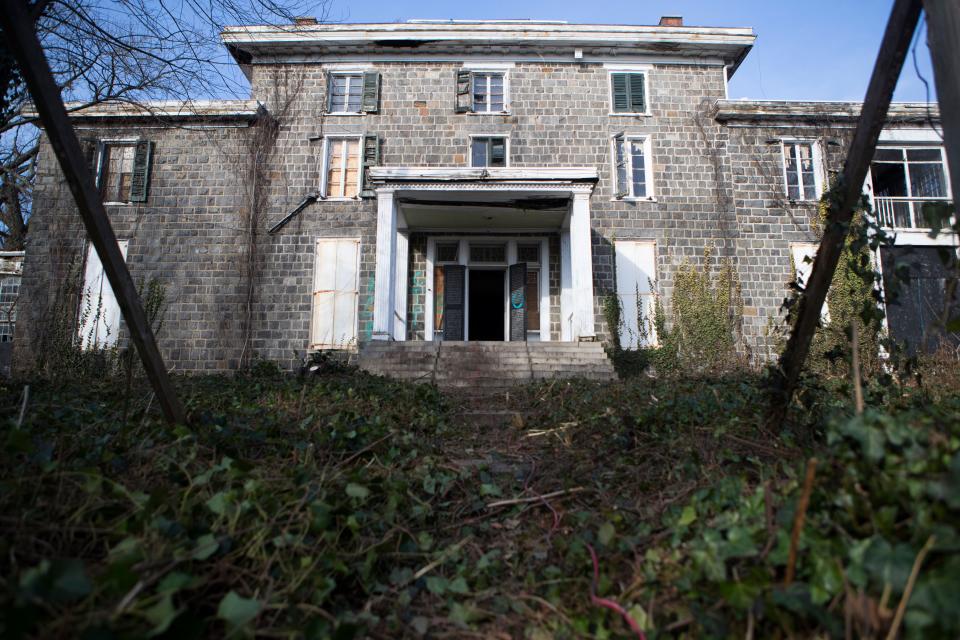
A crumbling, spooky and vacant 30-room mansion made of Brandywine blue stone at Pennsylvania and Greenhill avenues in Wilmington was the former home of H. Rodney Sharp, whose wife, Isabella du Pont Sharp, was a descendent of the founders of the DuPont Co.
The 16,000-square-foot mansion and property, listed on the National Register of Historic Places, was built on a high rocky outcropping in 1844 by John Rodney Brinckle, a cotton merchant and descendant of Caesar Rodney, a signer of the Declaration of Independence.
In 1909, the Sharps bought what was then a large saltbox and began extensive renovations. They tripled the size of the house during the next several decades.
Sharp also was an owner of Odessa's National Historic Landmark Corbit-Sharp house.
A limited liability company has owned the 6-acre Gibraltar property since 2010. It includes a garage, potting shed and formal walled garden designed by Marian Cruger Coffin, the first woman in America to become a major landscape architect.
Goodstay
In 1969, the family of Ellen du Pont Meeds Wheelwright, a daughter of T. Coleman du Pont, gave the University of Delaware her home, Goodstay.
The stone colonial house with its adjacent formal gardens is located off Pennsylvania Avenue in Wilmington. It's now part of UD's Wilmington campus.
More: Walk this way: 6 places to hike, soak up history, see autumn leaves and maybe a few ghosts
The house, dating back to the mid-17th century, was originally known as Green Hill and was once the family home of artist Howard Pyle.
In 1868, Margaretta du Pont (Pierre S., Alfred I. and T. Coleman's grandmother) moved in and renamed it Goodstay.
Today, the gardens, free and open to the public year-round, are maintained by the nonprofit group Friends of the Goodstay Gardens. The gardens are tucked away behind the Osher Center for Lifelong Learning and beside the Goodstay Center Mansion.
Longwood Gardens
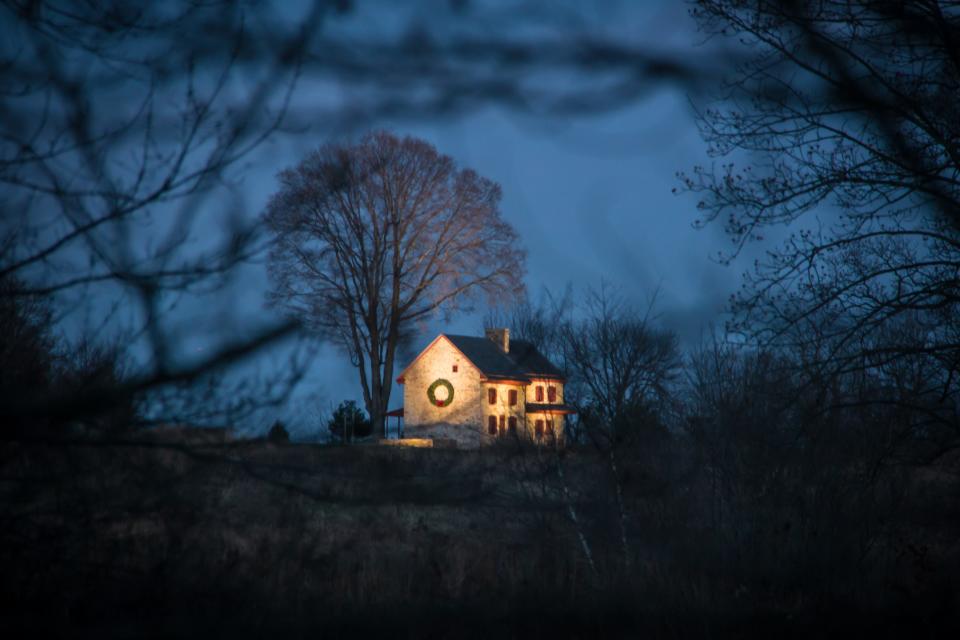
The site of present-day Longwood Gardens near Kennett Square, Pennsylvania, originally was farmland owned by a Quaker farmer named George Peirce. The brick farmhouse his sons built later became known as the Peirce-du Pont House when Pierre S. du Pont purchased the house and its 202-acre property in 1906. The name came from the nearby Longwood Meeting House.
Managers took over care of the arboretum and the property, while du Pont focused on the interior of the home. He installed a bowling alley in the basement and a glass-bottomed fish pond.
Because du Pont, who had a lifelong passion for gardening, felt Longwood "was rather dreary in the winter," he constructed a small conservatory, the inspiration for today's popular grand-scale conservatory.
Du Pont made sure his estate, now more than 1,077 acres of lush gardens just over the Delaware state line, would remain open to the public and thrive after his 1954 death. The 150th and 200th anniversaries of the du Pont's arrival in the United States were held at Longwood Gardens in 1950 and in 2000, respectively.
Mt. Cuba
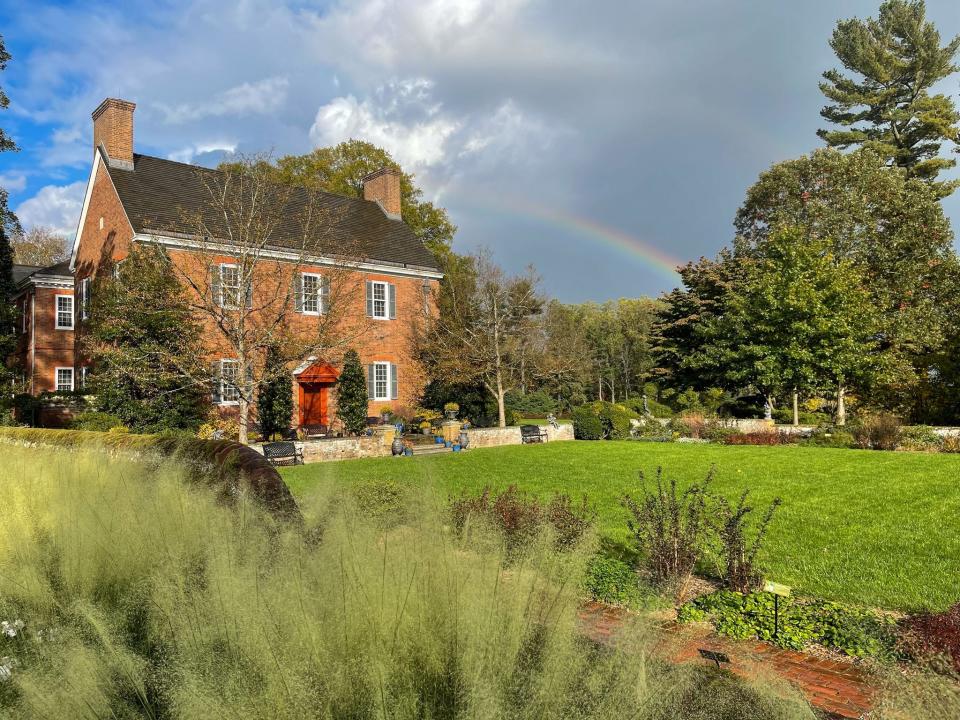
The DuPont Co.'s 11th president, Lammot du Pont Copeland, and his wife, Pamela, were well-known for their commitment and funding for arts and culture in Delaware.
In 1935, the couple purchased more than 126 acres of land near the village of Mount Cuba off Barley Mill Road near Hockessin, where they built a Colonial-Revival-style house and began planning formal gardens.
In 1949, they brought in landscaper Marian Coffin to plan the formal gardens. She also worked with Henry Francis du Pont at Winterthur and created gardens at Goodstay and Gibraltar. The Copelands, like many du Pont family members, were life-long gardeners.
After the Copelands' deaths, Mt. Cuba eventually was opened to the public and began charging general admission in 2013. In 2018, Mt. Cuba Center's 582 acres merged with the 501 acres of the adjoining Red Clay Reservation. Mt. Cuba is on the National Register of Historic Places.
Mt. Cuba has more than 2 miles of trails throughout its more than 1,000 acres. Its gardens are closed for the season and will reopen on Saturday, April 1.
Nemours Estate
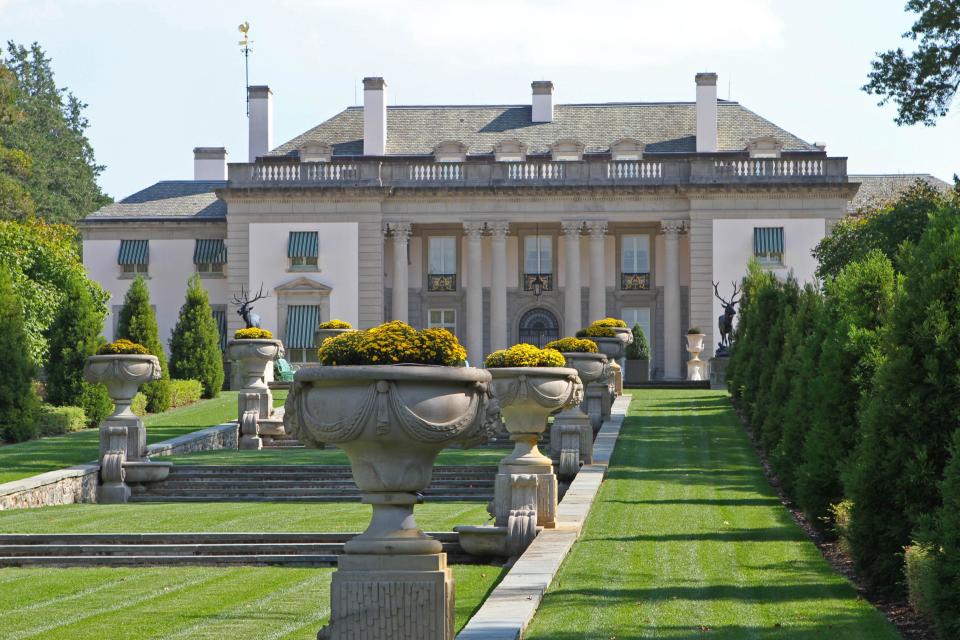
Nemours was the stunning home of Alfred I. duPont, who with his cousins Pierre S. and T. Coleman du Pont founded the modern-day DuPont Co. After divorcing his wife, Bessie, duPont, who eliminated the space in his last name unlike ssome of his other du Pont cousins, married Alicia Heyward Bradford.
In 1909, in an effort to please his Francophile new wife, duPont began construction on the Nemours Estate at 1600 Rockland Road in Rockland. The mansion was designed to look like Marie Antoinette's Petit Trianon on the grounds of the Palace of Versailles.
At that time, Nemours cost $2 million, more than Andrew Carnegie's 64-room 1901 mansion in New York City. The cost today for duPont would have been $69.8 million.
More: Discovering, sharing Delaware history, from the celebratory to the complicated and difficult
Nemours, a 77-room, 47,000-square-foot house Alfred named after a French town, was ready for occupancy in December 1910. It was designed by the same architects who created the New York Public Library and the Senate Office Building. It has the largest formal French gardens in North America, a chauffeur's garage housing a collection of vintage automobiles and nearly 200 acres of scenic woodlands, meadows and lawns.
DuPont, along with his dog, his third wife, Jessie Ball, and his brother-in-law are buried under a 210-foot bell tower on the grounds of Nemours. The estate reopened to the public in 2008 after receiving a $38.7 million renovation.
Nemours Estate is closed for the season and will reopen on April 1.
Oberod
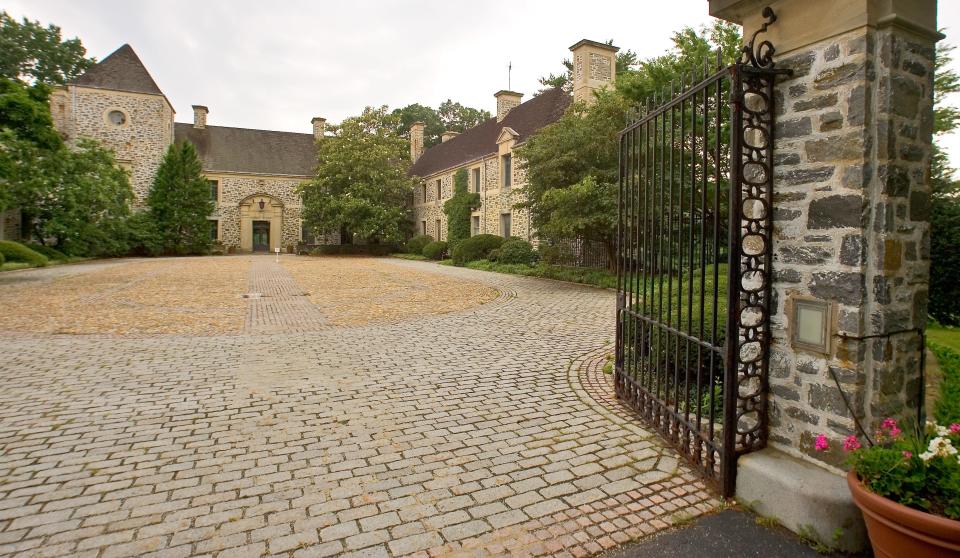
In 1979, the 40-acre Oberod estate was gifted to the Episcopal Diocese of Delaware by Jane du Pont Lunger, an owner/breeder of thoroughbred race horses and her late husband Harry, a descendent of the founder of the DuPont Co.
The 1936 Normandy-style manor home that has 26 rooms on two floors and a cobblestone courtyard is on the outskirts of Centreville and offers scenic views of Burnt Mill Road.
It was purchased in 2007 for $3 million by Vance Kershner, a former DuPont Co. engineer who founded LabWare Inc. and is a general partner in venture capital firm Leading Edge Ventures.
Kershner also is an owner of Buckley's Tavern in Centreville. LabWare uses it as a training facility and to host special events.
Owl's Nest
Ethel du Pont and Franklin Delano Roosevelt Jr., the son of the then-32nd President Franklin Delano Roosevelt, announced their engagement on Nov. 15, 1936, at Owl's Nest, a du Pont family Greenville estate deep in the heart of northern Delaware's Chateau Country.
The Tudor-style residence, the home of her parents, Ethel and Eugene du Pont Jr., was on a 220-acre property off Owl's Nest Road. It became the home of Greenville Country Club in 1961.
Pelleport
At "the doorway" of Chateau Country, William du Pont built a 25-room, gray stone Victorian mansion at 3506 Kennett Pike in Greenville and named it Pelleport after one of the family’s ancestral homes in France.
The mansion was passed to cousin Eugene du Pont Sr. His family occupied the property for two generations. The residence stood vacant for more than 25 years until it was razed in 1954, to make room for the Eugene du Pont Convalescent Memorial Hospital.
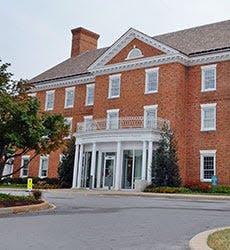
The idea for the hospital and a gift of more than $1 million in an endowment to build it came from Eugene du Pont Jr., director of the DuPont Co. from 1917 until 1954, and a great-grandson of company founder, éleuthère Irénée du Pont.
The Eugene du Pont Preventive Medicine & Rehabilitation Institute now is part of ChristianaCare. It reopened in 2018 after renovations.
Valley Garden Park
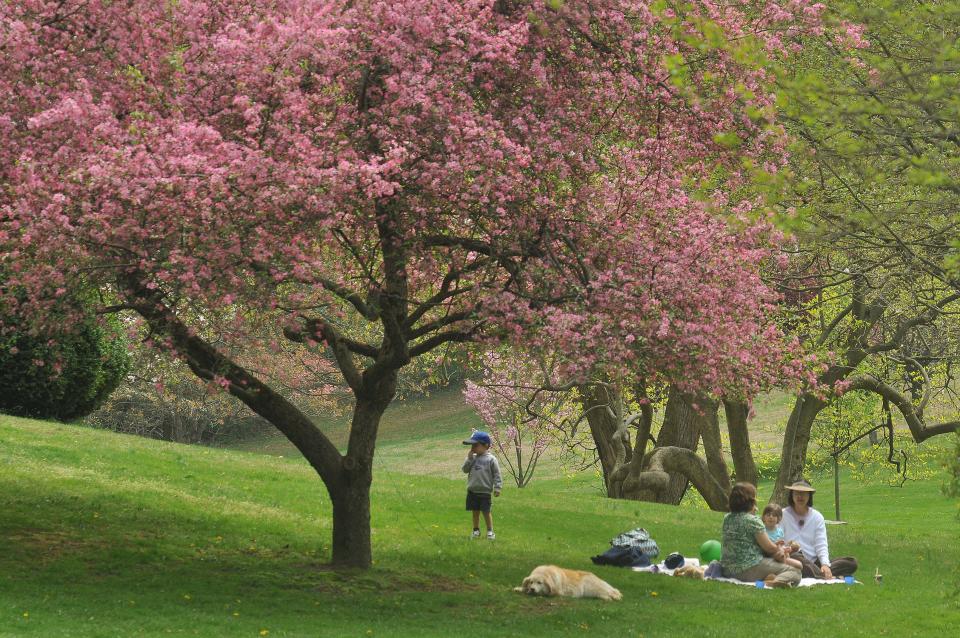
The site off Route 82 near Greenville was a gift to the city of Wilmington in 1942 from Ellen du Pont Wheelwright, the daughter of T. Coleman and Alice du Pont.
Formerly a farm, and then converted into a landscaped park and garden, it's a true, open-to-the-public gem. The park has a 1.3-mile loop trail that is open year-round. Dogs are welcome.
Winterthur
Henry Francis du Pont, whose sister Louise du Pont Crowninshield owned Eleutherian Mills, turn their childhood home Winterthur into a country estate, library, and museum that features one of the most significant collections of American decorative arts in the world.
The 175-room mansion, built in 1837 off Route 52, has pieces dating back to 1640. Winterthur has 1,000 acres of protected meadows, woodlands, ponds and waterways, along with a 60-acre garden designed by du Pont, and his close friend and landscape architect Marian Coffin.
The nearby exclusive Bidermann Golf Club was originally the nine-hole private course of du Pont, who also once owned the land that is now home to the Wilmington Country Club. Brandywine Creek State Park was once part of the Winterthur estate.
Winterthur is closed to the public until Feb. 28, but members can enjoy daily, year-round, dawn-to-dusk garden and estate access.
Contact Patricia Talorico at [email protected] and follow her on Twitter @pattytalorico.
This article originally appeared on Delaware News Journal: These 15 du Pont family estates offer glimpse at Delaware's rich past
